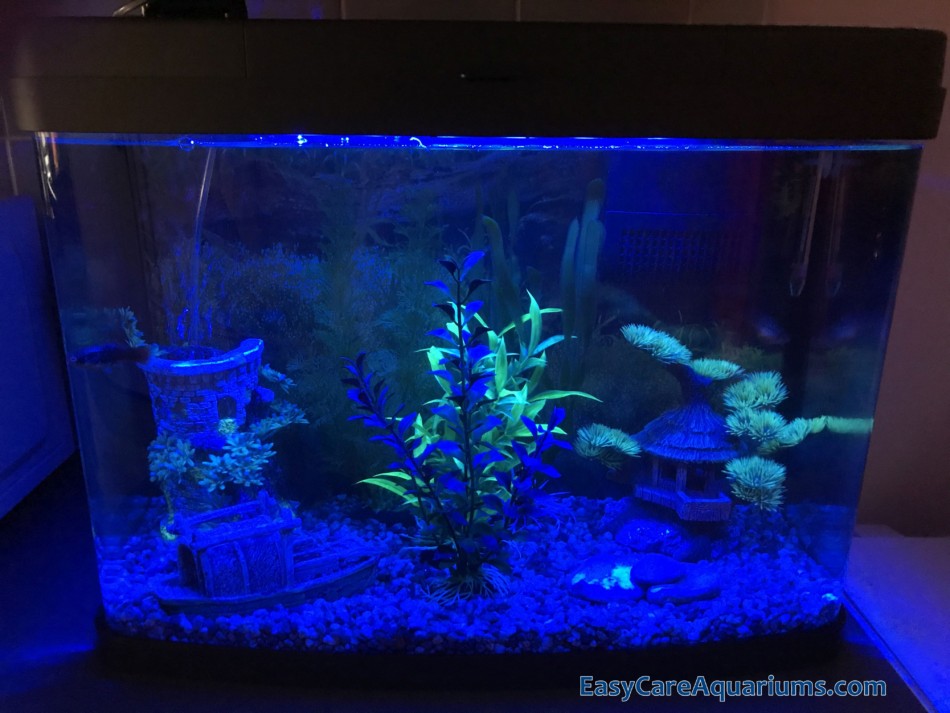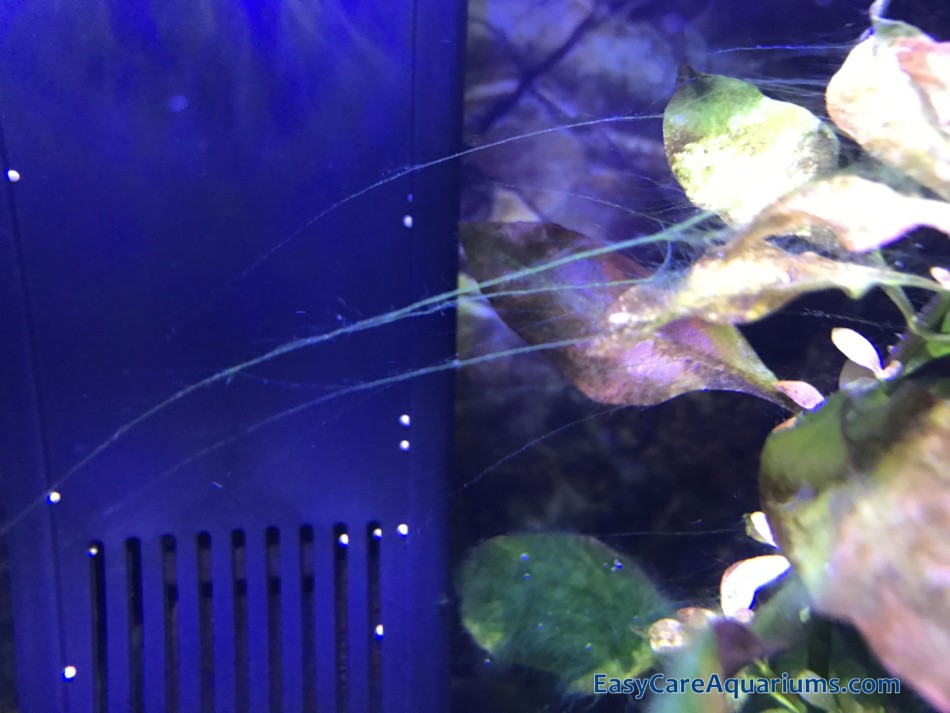A fairly common form of algae found in fish tanks is known as hair algae. It grows in freshwater tanks and is so named due to its appearance. If it’s uncontrolled it can end up looking like wispy strands of hair growing on the glass, plants, filter or other surfaces in your aquarium. I recently had a problem with algae growth in my tank and wanted to know if the hair algae was harmful to my fish.
Hair algae can be harmful to fish if there is a lot of it in your aquarium. If allowed to grow uncontrolled it may block light or use up the oxygen in the tank. In extreme situations hair algae that gets too thick could also trap your fish and result in suffocation.
Many owners of fish tanks will know that over time, algae will accumulate in the water. Different types of algae like to grow in tanks, depending on the specific conditions. Algae spores will naturally find their way into freshwater tanks and start to grow.
How Is Hair Algae Harmful to Fish?
Hair algae can be a real menace in your fish tank. If you notice any, keep an eye on it in case it starts to spread. Because of how dense hair algae can become it can cause issues for your tank in a few different ways.
By Blocking Light Into The Tank
Thick and fast growing hair algae can take over a tank pretty quickly. Hair algae that grows against the glass or surface of your tank can block the light into other areas, depriving your other plants of vital energy. This can ruin your aquarium set up and create an unbalanced ecosystem.
Having a balanced environment for your tank dwellers means less work for you. Once your tank has gotten past the initial cycling process it won’t need much maintenance other than regular water changes and gravel vacuuming.
An invasion of hair algae is something that definitely needs to be taken care of because it selfishly uses the light and nutrients for itself.
Algae Uses Up The Nutrients In The Tank
If the algae takes advantage of the nutrients in the aquarium it means the other living things such as plants, as well as your fish, will suffer. Oxygen levels can become low as a result of the algae growth. This is why an outbreak of hair algae (as well as other algae types) needs to be tackled as soon as it’s spotted.
Fish Can Become Trapped
Some smaller breeds of fish can actually get stuck in hair algae and suffocate. This happens when the hair algae is dense enough to completely trap the fish and starve it of oxygen.
Fish breathe through gills which can become blocked. Or they can even just end up using a lot of energy trying to escape and then can’t replace the oxygen they’re using up.
What Causes Hair Algae To Grow?
Like any algae, hair algae starts to grow when conditions are right. If you have a freshwater tank with adequate light, nutrients and enough space, hair algae will nearly always start to grow. And it will continue to grow until the whole tank is full of it unless stopped.
How Do You Stop Hair Algae From Growing?
To stop hair algae from growing you will need to try not give it the conditions it needs to grow. Monitoring nutrient levels in the water, and the amount of light the water receives, will help you to establish a tank that is less susceptible to hair algae.
It’s always best to try to identify the cause of the algae growth. Sometimes though you just need to clean up your tank in order to stop the hair algae from growing further and harming your fish.
Here are a few simple methods to try
Rip It Out
As simple as it sounds, literally ripping hair algae off the surfaces works to cull it back. If one of your tank plants is infested with hair algae, it is important to strip off the algae and put the plant back in.
If the plant is too far gone it’s worth buying a new one. Plants produce oxygen that the fish, and other aquarium life, need to breathe. So cleaning them, or replacing them is important.
Get An Algae Scraper
Algae scrapers help to quickly remove any build up on solid surfaces, particularly the glass. They look a bit like an ice-scraper that you would use on your car in the winter except they have a longer handle.
Another simple solution is to use one of the many store loyalty cards we all acquire over time. That is if you don’t mind getting your hands wet, and that’s par for the course anyway when keeping fish isn’t it?

Reduce the amount of light
Algae needs light to grow so try reducing the amount of hours that you have your aquarium lights on for. Since I’ve cleaned up the hair algae in my tank I make use of the blue LED light option in the early evening until turning it off for the night.
Get some algae-eating fish, shrimp or snails
A more long term solution is to add certain types of fish, shrimp or snails such as:
- Siamese Algae Eater
- Guppy
- Molly
- Bristlenose Pleco
- Otocinclus Catfish
- Amano Shrimp
- Cherry Shrimp
- Nerite Snails
All of these can be beneficial to help clean up the algae in your tank. And as a bonus, the algae growth will naturally provide them with another food source. Hair algae is unsightly, so why not replace it with some entertaining fish, shrimp or snails.
It’s worth thinking about including algae eaters in your aquarium even before the algae starts to grow. Algae can grow frighteningly fast. So having some of these algae-eaters in your tank setup to tackle algae growth before it gets out of hand is important.
Always check that the algae eaters you choose are suitable for your tank before you buy them.
My Experience With Shrimp And Snails Eating Algae
I left it until the algae on my glass had grown quite a bit before adding some nerite snails to my aquarium. I admit that I was unsure what to do at first. But as soon as I put the nerites into the tank they began to tackle the large green patch on the back glass.
The video above shows how they cleared it up over the course of a couple of days. The algae patch was quite a bit bigger before the snails got to work on it. But I didn’t think to start recording straight away.
Also, the algae hadn’t really had a chance to get badly out of hand. So it wasn’t the extremely long and wispy strands that is typical of hair algae. But the strands are there even though it’s difficult to see in the video.
I already had a couple of Amano shrimp in this tank. But despite reading that they are ferocious algae-eaters I have never seen mine munch on the algae growing on the glass.
They are perfectly happy scrabbling about in the substrate and on the plants, clearing up the fish poop, food and other debris. And they definitely go for the algae wafers. They’re just not so keen on the natural algae that’s growing on the tank glass and is harder to get at.
Maybe they are better algae-eaters in tanks where there is less snacking material on offer!

